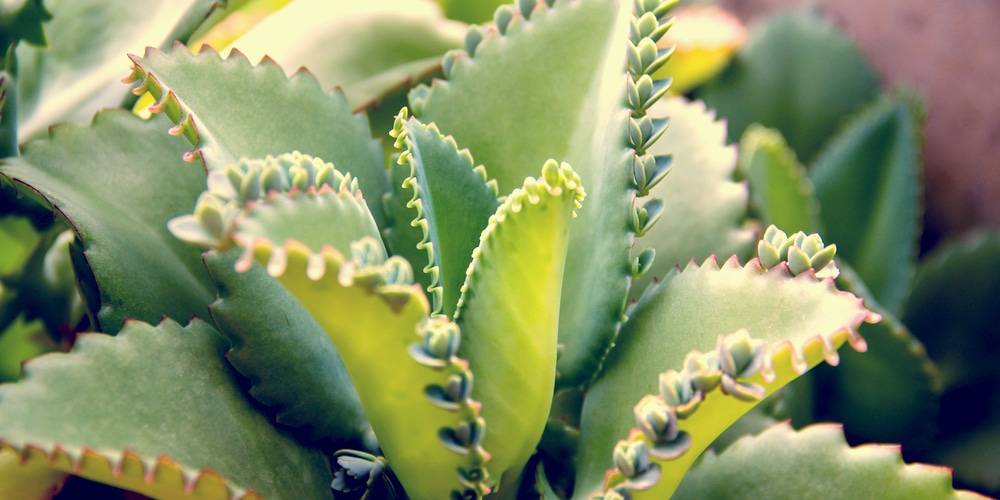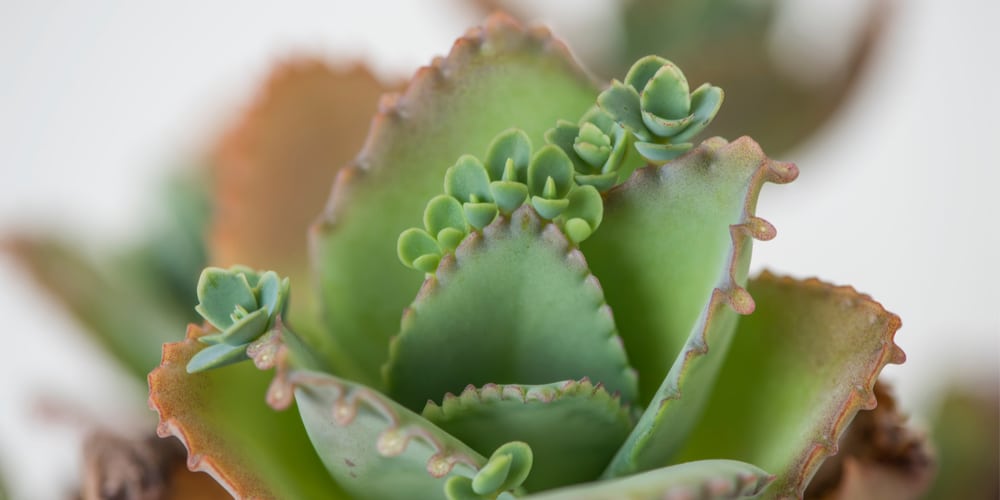Mother of Thousands is a very popular succulent that is well known due to the number of baby plantlets it can produce. A healthy mother of thousands can produce lots of baby’s along the edges of their leaves. These plants are easy to grow by propagating the young seedlings and are also very easy to care for, even if you’re a beginner. If your mother of thousands leaves are turning yellow, read on!
While the mother of thousands are easy to look after, they may start to turn yellow if they aren’t living in the correct conditions. Overwatering or under watering can cause the Mother of Thousands leaves to turn yellow. This article will answer the question, ‘why is my mother of thousands turning yellow?’
Why is my mother of thousands turning yellow?

The Mothers of Thousands scientific name is Kalanchoe daigremontiana; there are many different varieties of this popular house plant available. These plants also have four common nicknames, the most used being mother of thousands of mother of millions. However, the plants are also called devil’s backbone or Mexican hat plant.
Mother of thousands are generally considered a hardy variety of indoor plant which can thrive in various conditions. They are succulents, so they require dry soil and shouldn’t be overwatered. Overwatering is the main reason that a mother of thousands will turn yellow and eventually die. Other reasons may include too much humidity or underwatering.
What to do if your mother of thousands is turning yellow?
Mother of thousands are a popular indoor houseplant globally. They can also be grown outdoors in the right climate. To avoid having your mother of thousands plants turn yellow and die, you’ll need to provide the correct care. If your plant doesn’t seem too healthy and it has plantlets, it may be a good idea to grow a new plant.
On the other hand, if your plant feels waterlogged, you can remove some of the soil from around its roots and then repot it in dry soil. You can also put a layer of gravel or stones in the bottom of your pot to help with drainage.
Here’s how to care for a mother of thousands succulent plant:
Here’s how to save a mother of thousands with leaves that are turning yellow:
Soil
It’s best to plant mother of thousands in a special cacti and succulent soil. You can also mix in some perlite to help with drainage and air circulation. Succulent soil mix helps with moisture retention, allowing young seedlings to get enough water to grow well.
Watering
Mothers of thousands don’t like being waterlogged, so avoid overwatering. Provide the plants with a little water once or twice a week in the summer and once every two weeks in the winter and fall. The amount of water your succulent needs will vary slightly depending on the climate you live in. If you live in a hot area, the plant may need more water. Always feel the soil and let the soil dry out between watering.
Overwatering will make the leaves of the mother of thousands turn yellow and cause the plant to die. In winter, the mother of thousands becomes dormant and doesn’t need much water. You can spray the plants with a little water to make them slightly moist. Don’t overdo watering at this time. These plants can be watered with lukewarm water in the winter.
Temperature
Mothers of thousands don’t like the cold and, if left in cold temperatures, can turn yellow and die. These plants shouldn’t be left outside in the cold if the temperature is below 30° F. In general; these plants like to live in temperatures of 61 F.
They can be grown outside if you live in USDA hardiness zones 9 to 11. Otherwise, you’ll need to keep your succulent inside. Ensure that your plants are warm enough, especially in winter.
Light
Mother of thousands grows best in partial or bright light. These plants shouldn’t be kept in full sun as the leaves can burn and become discolored. It’s best to grow these succulents in a shaded area that gets the sun for about three hours a day. Don’t keep the plants in the dark, or they may lose green vegetation.
Conclusion
As you can see, many things can cause the mother of thousands of leaves to turn yellow. These plants need the right amount of sun and water. They don’t like to get too cold and shouldn’t be overwatered.
